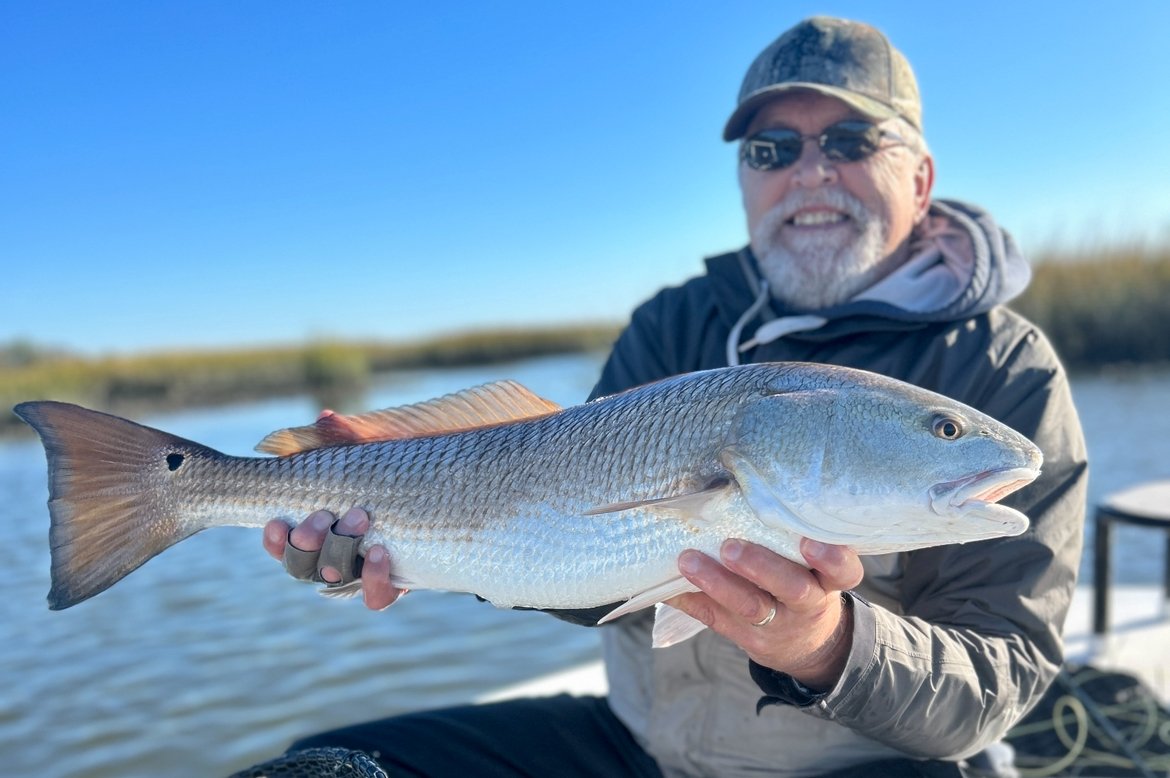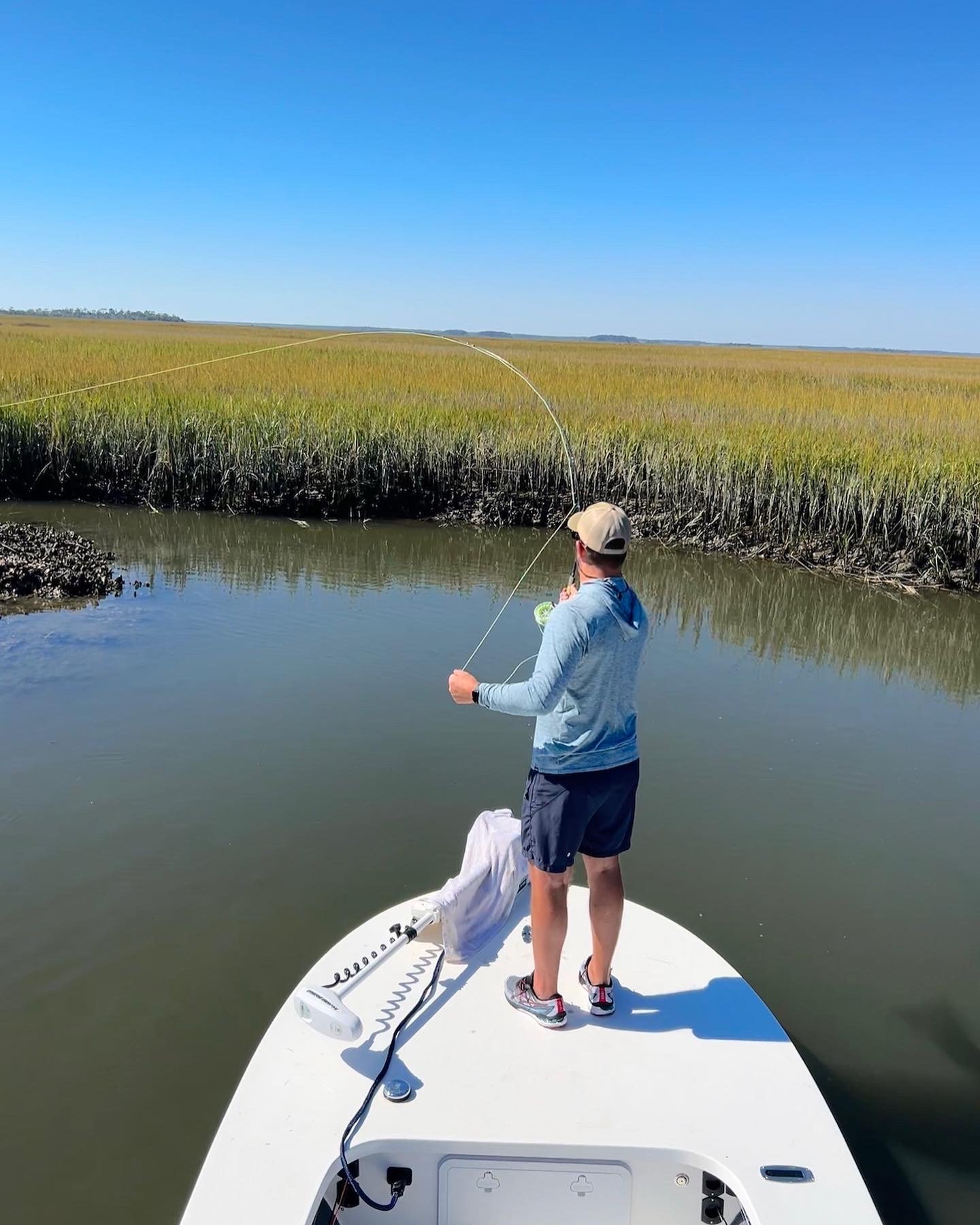Fly Fishing Myrtle Beach: Essential Redfish Flies for Success
Introduction: Redfish, also known as red drum, are one of the most sought-after gamefish along the coastal waters of the Southeastern United States. Renowned for their powerful runs and aggressive eats, these bruisers present an exciting challenge for fly anglers. To unlock the thrill of redfish on the fly, let's delve into the art of choosing the right flies. Join us as we explore the essential patterns that will entice redfish and enhance your fly fishing experience.
Understanding Redfish Behavior: Before we dive into fly patterns, it's crucial to understand the feeding habits and preferences of redfish. These powerful predators often patrol shallow flats, marshes, and oyster beds in search of prey. They have a keen sense of smell and are known to root around the bottom for crabs, shrimp, and small baitfish. Tailor your fly selection to mimic the local forage and entice redfish to strike.
Clouser Minnow: The Clouser Minnow is a versatile fly pattern that mimics baitfish, making it a go-to choice for redfish. Its weighted eyes give it a realistic jigging action when retrieved, resembling a fleeing baitfish. Tie this pattern in various sizes and colors to match the local baitfish species, adjusting to the water clarity and light conditions.
Crab Patterns: Crabs are a staple in the redfish diet, especially in shallow waters. Crab fly patterns, such as the Merkin, Kwan style crabs or Copperhead Crabs, are effective choices for enticing redfish. These patterns imitate the natural movement and appearance of crabs, making them irresistible to hungry redfish cruising the flats.
Shrimp Imitations: Redfish are opportunistic feeders and won't pass up a tasty shrimp. Shrimp fly patterns, like the Razzmataz or Redfish Cracklin', can be deadly when presented effectively. The lifelike movement of these flies in the water triggers predatory instincts, prompting redfish to strike aggressively.
Gurglers: For surface action, consider using a Gurgler. This topwater fly creates commotion on the surface, attracting redfish with its popping sound and wake. It's an exciting option, especially in shallow water where redfish might be cruising or tailing.
Tips for Success:
Match the Hatch: Observe the local baitfish, crabs, and shrimp to tailor your fly selection to the redfish's natural prey.
Retrieve Techniques: Experiment with different retrieve styles, including slow strips, erratic jerks, and pauses, to find what triggers redfish strikes.
Seasonal Adjustments: Be mindful of seasonal variations in redfish behavior. In colder months, consider slower retrieves, while warmer months may call for faster-paced presentations.
Conclusion: Fly fishing for redfish is a thrilling pursuit that requires a well-stocked fly box and a keen understanding of the fish's behavior. Armed with the right fly patterns and techniques, you'll be ready to face the challenge of targeting redfish in diverse coastal environments. So, tie on these essential redfish flies, head to the flats, and experience the exhilaration of hooking into these powerful and iconic gamefish.
Georgetown Fly Angler: Ed Walzer
Ed Walzer. Where do I start? This guy is the client that makes a guide dreams come true. 70’ 3’ o’clock? Pfft no problem. Don’t trout set? This man has been strip setting before I was a twinkle in my daddy’s eye. Talk junk to the guy on the poling platform? Yep, but able to take it too. What a guy.
Ed reached out to me in early September 2023 about setting up a few dates in October. In our text and phone conversations, I could tell how serious he was about throwing a fly rod. At some point, I thought I was being interrogated by a detective. Are you full time? How long have you been guiding? “Don’t worry about my casting I’ve been doing it a lot longer than you have been on this earth.” Jesus. For the first time since I started guiding, I was sweating about having someone on my boat. I was worried I wouldn’t produce for him. So, as the days came I prepared, found some new fish, and scouted really hard. I felt better but the nerves were still there.
Day one: October 3rd, 6:15am. I pull up, there’s Ed, rods rigged, traveling light and ready to roll. Threw him some rain gear, he suited up and off we went. We made quick conversation and my comfort level rose. The plan was to throw gurglers at first light for a topwater eat. About 10 casts in Ed sticks a nice trout. The heat was off a little, but I knew we had to find the redfish. It slowed and we started working our way into the creeks. Ed was a machine, this guy threw lazers. We got a few shots but not much love. A little while later while poling, I hear thud. I look in the cockpit and a tarpon jumped in the boat. “Ed a f***king tarpon just jumped in the boat” Ed lit up, he thought it was great, so did I. “They just jump in the boat for me.” We laugh about that to this day. With little love from the redfish the tide started to rise, I knew we were on a timer and time was almost up. Ed says “ I had fun but I have to have a redfish next trip.” “Hold on, old man we ain’t done yet..” So as a last ditch effort, I poled into a creek I’ve never fished before. We started in the flooded grass, I look away for a second and boom Ed is tight! This is a nice fish, top end of an estuary fish. We put the heat on and got her to the net 28”. I don’t know who was more excited him or I. What a Hail Mary. “Alright let’s end it there..” We get back to the dock and share our high 5s and as Ed pulls out. “I want a 30” next trip” and chuckles.. I rolled my eyes.
Day Two. October 24th. We are off again, cold, calm and just right. Ed wanted to fish one of his flies, a copperhead crab. We got right to the creeks and boy was it happening. Birds diving over fish, shrimp popping and redfish feasting. “Ed look at that f***king group, hold on, alright hit ‘em in the head.” The fly was ate before it hit the water. Story book scenario, get it to the net and guess what? 30” on the nose. “Alright old man there’s your 30, ready to go home?” We laughed and moved on. We let them fish settle and looked for new ones. We had the same situation happen 2 more times, epic. One fish first refused then turned around and ate 10’ from the skiff. We had a Golden Horseshoe up our ass, well atleast Ed did. We made the victory lap home with two shit eating grins.
We got back to the dock loaded the boat, and conversed a little. Not going to lie I was a little sad he was leaving. I had a lot of fun with him. We said our see ya laters and Ed says “you know you are a good guide, but you didn’t get me a 40 incher” and laughs.
These moments live forever in my mind. The friendships gained in a skiff can be that of a lifetime.
-Johnny
Homework
It’s coming up. Your day chasing your first saltwater species. You are probably watching YouTube videos, buying/tying flies, and fine tuning your gear. Trust me I know the stoke you have, I get it every time I hear my outboard fire up.
The truth to success on your first trip boils down to one thing. Showing the fish the fly. How do we show the fish the fly? Casting efficiently. This is where your homework comes in. Hear me out, you do not want your time on the water to be a casting lesson. 1. It’s expensive and 2. It’s frustrating for you and your guide. Believe me, we want you to put your hand on that fish as much as you do!
In my fishery, a consistent 40’ cast will for the most part get it done. Often, I ask these questions before my trips. What is your honest casting ability? What are you usually fishing for? And have you ever fished from a skiff? This helps me gauge what their norm is and give my suggestions. Rarely, do I believe suggestions are followed but listen to your guide he or she is not going to point you down the wrong path. Success out here takes teamwork.
Here are some tips to prep for your trip that will actually be worth your while.
Target practice - cast at a dinner plate, patch of dead grass, or your dog. Practice throwing at it, 3’ in front, 3’ behind, cover it up. Work out from 20’- 60’ it’s amazing how much 10-15 minutes will help you get more consistent and confident.
Stop false casting- like clockwork do I see the first two false casts look perfect then the presentation cast just falls apart. Try to get comfortable to limiting your delivery to 1 false cast. Pick up false cast, load rod and deliver. I once heard “confidence comes with less false casts.” It holds true. Every. Time.
Good Mechanics- an efficient cast is dictated by two abrupt stops on a consistent plane between the forward cast and back cast. The rod will do the work and your haul hand. Never throw your arm at the target keep it tight and connected. Put a sock under your armpit when practicing it should never fall out. Check out the video links I will put at the end.
Dump the trout set. Go to your bass pond, fish streamers and do everything in your power to keep the rod top down during the hook set. It’s going to hurt but do it. When you get an eat and you lift the rod it is not only heartbreaking for you it is for me too!
It sounds like a lot but all together it’s very simple. Make some time to practice, make your time out here count. We can get you there, the last 30’ is up to you.
Starting your cast- https://youtu.be/wljwui_gezo
How to double haul- https://youtu.be/D5tIbK6xcjI
Lowcountry Christmas
The dog days are over. The morning air is crisp, the marsh is coming alive….
The dog days are over. The morning air is crisp, and the marsh is coming alive. The time of the year we all dream about, fisherman and hunters alike. Every thing magical happens in the Fall.
We push the boat off, its 6:30 am and a slight chill gives you goosebumps. You know it is on, the full moon from the night before still high in the sky, the tide is rising, and the race to the flats begins. We show up early, water slowly floods the short grass, the fish push their way on, so skinny you swear their eyes are dry. We work our way up, get a shot, lined… Fish is gone, shake it off keep moving.
Eyes up, 40 yds, 10 o’clock, the shimmer of a blue tail reflecting in the morning sun. It just feels right, we pole 70’, 50’, 30’. She’s happy, only worried about what is in front of her nose. Take your time, breathe, pick your shot, its quiet as the fly unfolds in the zone. She’s on a string. Bump, Bump, Bump, get tight! Like a weed wacker across the flat, bring her home, hand around the tail, she’s ours. We decompress. Release, lets find another.
Fall, its Christmas time in the Low Country.








